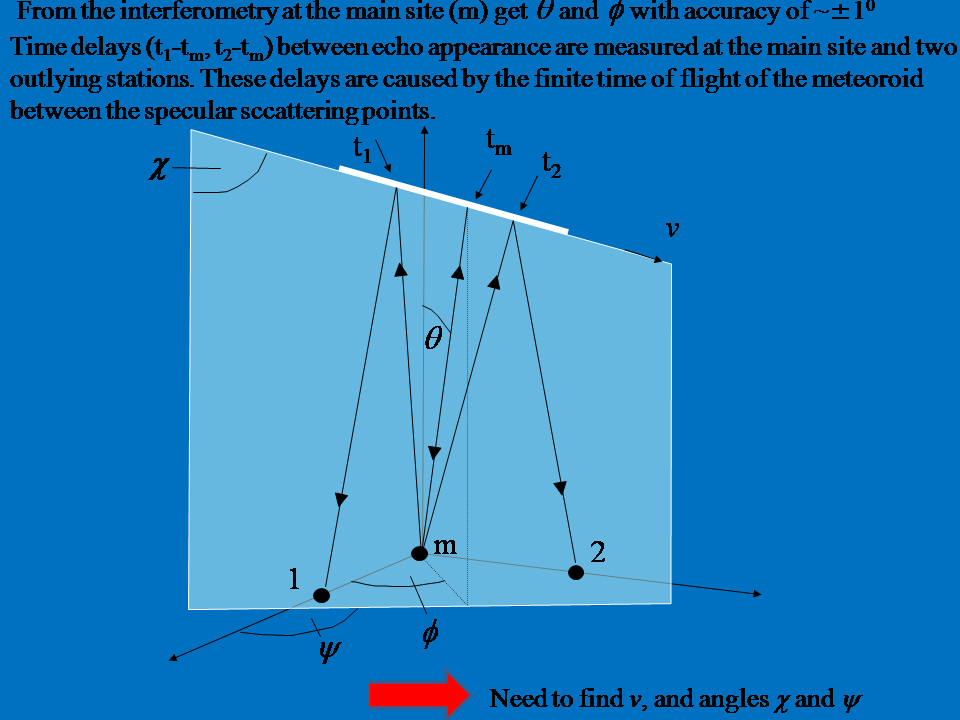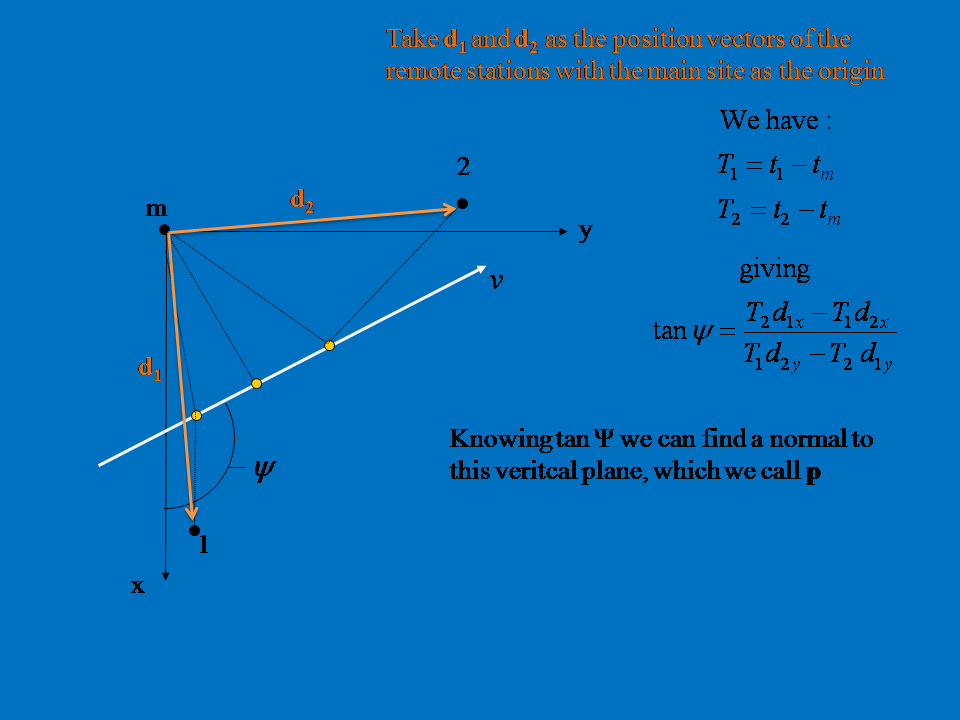Meteor Radar Observations
The Canadian Meteor Orbit Radar (CMOR)
How Orbits are Computed
Computation of individual meteoroid orbits by specular scattering radars such as CMOR requires echo signals to be detected at a total of three or more sites. Using the interferometry information from the main site, the local apparent radiant of a particular echo can be constrained to lie on a great circle, the plane normal being given by the echo direction. By combining this information with the known station locations and apparent time of appearance of a common meteor at each site it is possible to compute the complete velocity vector of a meteoroid, assuming no deceleration. More details of the technique can be found here.
The scattering geometry, as seen from the side, is shown below:

As seen from above, the scattering from the main site to each remote site relative to the meteor trail is further developed as:

Finally, with the geomtery from the time delays, station spacing and interferometry known, the meteor radiant and speed can be computed as:




